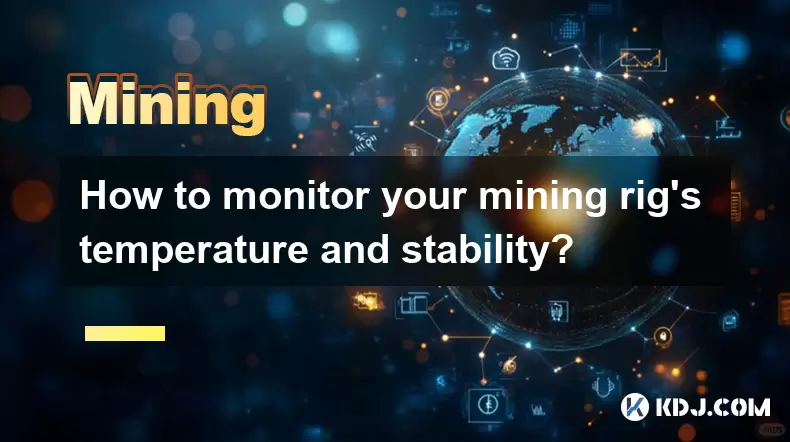-
 Bitcoin
Bitcoin $116400
-0.36% -
 Ethereum
Ethereum $4033
3.40% -
 XRP
XRP $3.302
-1.26% -
 Tether USDt
Tether USDt $1.000
-0.02% -
 BNB
BNB $796.1
1.67% -
 Solana
Solana $177.8
1.89% -
 USDC
USDC $0.9999
0.00% -
 Dogecoin
Dogecoin $0.2314
4.09% -
 TRON
TRON $0.3381
0.14% -
 Cardano
Cardano $0.7989
1.22% -
 Stellar
Stellar $0.4496
-1.84% -
 Chainlink
Chainlink $20.42
9.42% -
 Hyperliquid
Hyperliquid $41.17
0.88% -
 Sui
Sui $3.914
3.77% -
 Bitcoin Cash
Bitcoin Cash $584.7
1.52% -
 Hedera
Hedera $0.2632
-0.54% -
 Avalanche
Avalanche $24.09
3.40% -
 Ethena USDe
Ethena USDe $1.001
-0.02% -
 Litecoin
Litecoin $123.2
1.33% -
 Toncoin
Toncoin $3.318
-0.04% -
 UNUS SED LEO
UNUS SED LEO $8.984
-0.05% -
 Shiba Inu
Shiba Inu $0.00001323
2.85% -
 Uniswap
Uniswap $10.90
4.41% -
 Polkadot
Polkadot $3.999
3.34% -
 Dai
Dai $1.000
0.01% -
 Cronos
Cronos $0.1630
9.64% -
 Bitget Token
Bitget Token $4.484
0.82% -
 Monero
Monero $272.4
2.44% -
 Pepe
Pepe $0.00001173
6.03% -
 Aave
Aave $290.8
2.88%
How to calculate the income of Bitcoin mining?
Calculating Bitcoin mining income involves understanding hardware costs, electricity consumption, block rewards, transaction fees, difficulty adjustments, mining pool fees, and optimizing performance while considering risks and market conditions.
Feb 25, 2025 at 10:42 pm

Key Points:
- Understanding the Mining Process and Blockchain Technology
- Determining Mining Hardware Costs
- Estimating Electricity Consumption and Costs
- Calculating Block Rewards and Transaction Fees
- Accounting for Difficulty Adjustments and Market Conditions
- Managing Mining Pool Fees and Distribution
- Optimizing Mining Performance for Maximum Income
- Risk Assessment and Considerations
How to Calculate the Income of Bitcoin Mining
1. Understand the Mining Process and Blockchain Technology:
Bitcoin mining involves utilizing specialized hardware to solve complex mathematical puzzles that verify and validate transactions on the Bitcoin network. The first miner to solve a puzzle earns a block reward in Bitcoin. Additionally, miners may collect transaction fees included in the blocks they mine.
2. Determine Mining Hardware Costs:
The type of mining hardware you choose, such as ASICs or GPUs, directly impacts your income potential. ASICs offer higher hash rates but come with higher upfront costs. GPUs, while cheaper, have lower hash rates. Research and compare the specifications and costs of different mining rigs to find the best balance.
3. Estimate Electricity Consumption and Costs:
Mining hardware consumes significant amounts of electricity. Estimate the power consumption of your rig using online calculators or consult with the hardware manufacturer. Calculate the cost of electricity in your region by multiplying consumption by the per-unit cost.
4. Calculate Block Rewards and Transaction Fees:
The block reward for mining a Bitcoin block is predetermined and varies over time. Additionally, miners may collect transaction fees from the transactions included in the blocks they mine. Track the current block reward and transaction fee rates to estimate potential income.
5. Account for Difficulty Adjustments and Market Conditions:
The Bitcoin network automatically adjusts its mining difficulty to maintain a steady block issuance rate. As more miners join the network, the difficulty increases, making it harder to solve puzzles and earn rewards. Consider these adjustments when calculating income potential. Also, factor in the volatility of the Bitcoin market, as it can impact the value of your earnings.
6. Manage Mining Pool Fees and Distribution:
Many miners join mining pools to increase their chances of finding blocks. However, pools charge fees for their services, which should be accounted for when calculating income. Determine the fee structure and distribution policies of the pool you join.
7. Optimize Mining Performance for Maximum Income:
Implement strategies to optimize the performance of your mining rig, such as proper cooling, overclocking (for GPUs), and using efficient power supplies. Optimizing performance can increase your hash rate and potential income.
8. Risk Assessment and Considerations:
Bitcoin mining involves risks. Consider factors such as hardware failure, changes in network difficulty, market fluctuations, and the potential for regulations to impact your income. Evaluate your risk tolerance and readiness before investing in mining hardware.
FAQs:
Q: What is the current block reward for mining a Bitcoin block?
A: The block reward halved to 6.25 BTC in April 2020 and is scheduled to halve again in 2024.
Q: How can I choose the best mining hardware for my situation?
A: Consider the hash rate, power consumption, and cost of the hardware. Research different options and compare specifications to determine the most suitable rig for your needs.
Q: Is it possible to earn a passive income from Bitcoin mining?
A: While mining can potentially generate income, it's not a guaranteed passive income stream. Factors such as electricity costs, hardware performance, and network difficulty can impact earnings.
Q: How do I join a Bitcoin mining pool?
A: Choose a reputable pool that aligns with your needs and fees. Create an account on the pool's website and provide the necessary information to connect your mining rig.
Q: What are the common risks associated with Bitcoin mining?
A: Risks include hardware failure, changes in network difficulty, market volatility, and potential regulation. Carefully assess these risks before investing in mining hardware.
Disclaimer:info@kdj.com
The information provided is not trading advice. kdj.com does not assume any responsibility for any investments made based on the information provided in this article. Cryptocurrencies are highly volatile and it is highly recommended that you invest with caution after thorough research!
If you believe that the content used on this website infringes your copyright, please contact us immediately (info@kdj.com) and we will delete it promptly.
- HAT Token Mania: Price Surges, Crypto Auctions, and Meme Coin Mayhem
- 2025-08-09 11:10:11
- Undervalued Cryptos Primed for a 2025 Takeoff: MAGACOIN, TRX, and SUI Lead the Pack
- 2025-08-09 11:10:11
- Bitcoin Goes to Harvard: Ivy League Embraces Digital Assets
- 2025-08-09 10:50:12
- Bitcoin, BlockDAG, and Toncoin: Decoding the Crypto Buzz in NYC
- 2025-08-09 11:30:11
- XRP, Pi Network, and Binance Listing Buzz: What's the Hype?
- 2025-08-09 11:30:11
- Arctic Pablo Coin: The Meme Coin Presale Promising High ROI in Q3 2025
- 2025-08-09 10:50:12
Related knowledge

What is "proof-of-work" and how does it relate to mining?
Aug 07,2025 at 02:03pm
Understanding the Concept of Proof-of-WorkProof-of-work (PoW) is a consensus mechanism used in blockchain networks to validate transactions and secure...

What are the differences between mining on Windows vs. Linux?
Aug 06,2025 at 11:29pm
Overview of Cryptocurrency Mining PlatformsCryptocurrency mining involves using computational power to solve complex cryptographic puzzles and validat...

How to use an old computer for cryptocurrency mining?
Aug 07,2025 at 12:42pm
Understanding the Feasibility of Using an Old Computer for MiningUsing an old computer for cryptocurrency mining may seem outdated, but it is still te...

Can you mine cryptocurrency using solar power?
Aug 07,2025 at 12:00am
Understanding the Basics of Cryptocurrency MiningCryptocurrency mining involves validating transactions on a blockchain network by solving complex cry...

How to monitor your mining rig's temperature and stability?
Aug 09,2025 at 09:43am
Understanding the Importance of Temperature Monitoring in Mining RigsMaintaining optimal temperature levels in a mining rig is essential for long-term...

How to build a mining rig inside a PC case?
Aug 06,2025 at 11:01pm
Understanding the Basics of a Mining Rig in a PC CaseBuilding a mining rig inside a PC case involves transforming a standard computer chassis into a d...

What is "proof-of-work" and how does it relate to mining?
Aug 07,2025 at 02:03pm
Understanding the Concept of Proof-of-WorkProof-of-work (PoW) is a consensus mechanism used in blockchain networks to validate transactions and secure...

What are the differences between mining on Windows vs. Linux?
Aug 06,2025 at 11:29pm
Overview of Cryptocurrency Mining PlatformsCryptocurrency mining involves using computational power to solve complex cryptographic puzzles and validat...

How to use an old computer for cryptocurrency mining?
Aug 07,2025 at 12:42pm
Understanding the Feasibility of Using an Old Computer for MiningUsing an old computer for cryptocurrency mining may seem outdated, but it is still te...

Can you mine cryptocurrency using solar power?
Aug 07,2025 at 12:00am
Understanding the Basics of Cryptocurrency MiningCryptocurrency mining involves validating transactions on a blockchain network by solving complex cry...

How to monitor your mining rig's temperature and stability?
Aug 09,2025 at 09:43am
Understanding the Importance of Temperature Monitoring in Mining RigsMaintaining optimal temperature levels in a mining rig is essential for long-term...

How to build a mining rig inside a PC case?
Aug 06,2025 at 11:01pm
Understanding the Basics of a Mining Rig in a PC CaseBuilding a mining rig inside a PC case involves transforming a standard computer chassis into a d...
See all articles

























































































